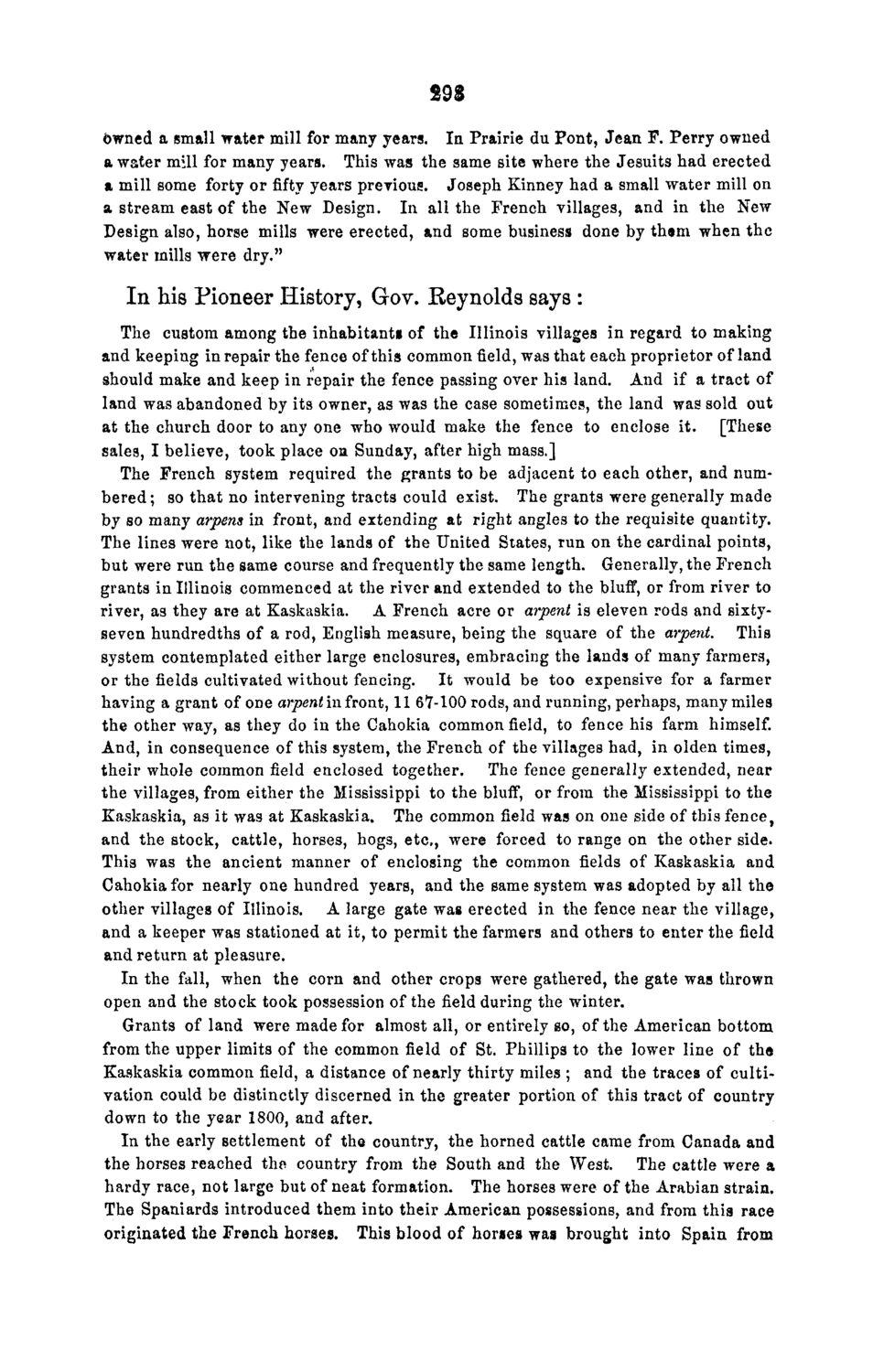| |
| |
Caption: Board of Trustees Minutes - 1868
This is a reduced-resolution page image for fast online browsing.

EXTRACTED TEXT FROM PAGE:
293 dwned a small water mill for many years. In Prairie du Pont, Jean F. Perry owned a water mill for many years. This was the same site where the Jesuits had erected a mill some forty or fifty years previous. Joseph Kinney had a small water mill on a stream east of the New Design. In all the French villages, and in the New Design also, horse mills were erected, and some business done by th«m when the water mills were dry." In his Pioneer History, Gov. Reynolds says : The custom among the inhabitant! of the Illinois villages in regard to making and keeping in repair the fence of this common field, was that each proprietor of land should make and keep in repair the fence passing over his land. And if a tract of land was abandoned by its owner, as was the case sometimes, the land was sold out at the church door to any one who would make the fence to enclose it. [These sales, I believe, took place on Sunday, after high mass.] The French system required the grants to be adjacent to each other, and numbered; so that no intervening tracts could exist. The grants were generally made by so many arpens in front, and extending at right angles to the requisite quantity. The lines were not, like the lands of the United States, run on the cardinal points, but were run the same course and frequently the same length. Generally, the French grants in Illinois commenced at the river and extended to the bluff, or from river to river, as they are at Kaskaskia. A French acre or arpent is eleven rods and sixtyseven hundredths of a rod, English measure, being the square of the arpent. This system contemplated either large enclosures, embracing the lands of many farmers, or the fields cultivated without fencing. It would be too expensive for a farmer having a grant of one arpentm front, 11 6^-100 rods, and running, perhaps, many miles the other way, as they do in the Cahokia common field, to fence his farm himself. And, in consequence of this system, the French of the villages had, in olden times, their whole common field enclosed together. The fence generally extended, near the villages, from either the Mississippi to the bluff, or from the Mississippi to the Kaskaskia, as it was at Kaskaskia. The common field was on one side of this fence, and the stock, cattle, horses, hogs, etc., were forced to range on the other side. This was the ancient manner of enclosing the common fields of Kaskaskia and Cahokia for nearly one hundred years, and the same system was adopted by all the other villages of Illinois. A large gate was erected in the fence near the village, and a keeper was stationed at it, to permit the farmers and others to enter the field and return at pleasure. In the fall, when the corn and other crops were gathered, the gate was thrown open and the stock took possession of the field during the winter. Grants of land were made for almost all, or entirely so, of the American bottom from the upper limits of the common field of St. Phillips to the lower line of the Kaskaskia common field, a distance of nearly thirty miles ; and the traces of cultivation could be distinctly discerned in the greater portion of this tract of country down to the year 1800, and after. In the early settlement of the country, the horned cattle came from Canada and the horses reached the country from the South and the West. The cattle were a hardy race, not large but of neat formation. The horses were of the Arabian strain. The Spaniards introduced them into their American possessions, and from this race originated the French horses. This blood of horses was brought into Spain from
| |